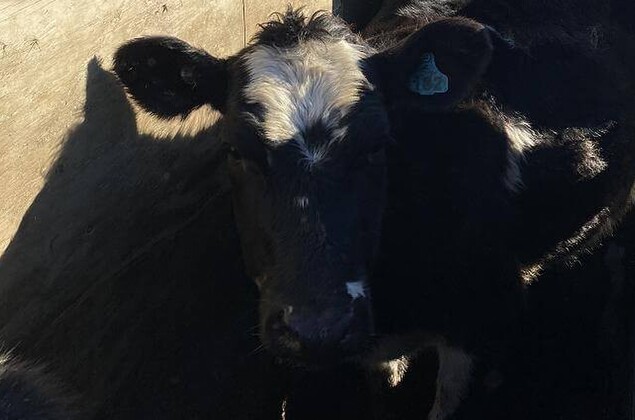Vet Claire dives into your FAQs around parasite management, trace elements and vaccinations for your youngstock.
Motivational quotes from studies published 2019-2020:
"Early calving heifers become early calving cows"
"Heifers that were a greater proportion of their 21-month LWT at 12 months of age produced more first lactation and cumulative 3-year milk yields than heifers that were a lesser proportion of their 21-month LWT at 12 months of age. These results indicate that increased growth in the early life of New Zealand dairy heifers is beneficial to future milk production."
"Heifers that were heavier at six, 12 and 15 months of age were more likely to survive in the herd for first, second and third calving compared to lighter heifers."
Parasite Management FAQs
Oral vs Injection vs Pour-on:
- Oral drenching is accurate and direct to internal worms (no coverage for external parasites) and generally safest for young calves, injectable drenches always deliver a reliable dose for internal and most external parasites, and pour-ons are generally formulated in higher concentrations to try and deliver as good a dose as possible- but there is a risk some runs off before being absorbed. Pour-ons are direct to external parasites.
Which product:
- Drench requirements change throughout the year. Early in the season, oral drenches are safest and solely target gut worms (e.g Arrest C, Switch C). There is a new drench on the market Turbo- that will target gut worms, and another pesky parasite called Coccidia.
- As the season progresses, Lungworm may become an issue – requiring an ML or 'ectin' in their drench (e.g Dectomax, Eclipse E inj).
- After the calves reach 100-120kg pour-ons can be safely used, and from 120-150kg a single (Alpheus) drench capsule can provide 125 days protection.
- From early autumn Cooperia can sneak up on them, often requiring Levamisole in the drench combination.
- As the months cool off external parasites like lice will need to be considered, and a good clean out drench to ensure Ostertagia doesn't hideout and give them problems in Spring. Consider Eclipse pour-on or Boss pour-on (which can be used in the rain!)
- Every farm has its own unique population of animals and worms so there is never a one size fits all when it comes to drenching stock. A combination product is recommended to be used as often as possible.
How often:
Don’t repeat a drench any earlier than 28 days – this is to do with the lifecycle of the worms and allowing a new generation to be exposed to the drench. Going earlier than 28 days will place unnecessary pressure on that drench on your farm. If the stock ‘need’ a drench that soon (less than 28 day interval) then a few other things need to be considered. Was the earlier drench effective? Or what else can be done management wise to reduce the worm burden.
If there is little grazing pressure, long grass, regular shifting, lots of space etc – then the stock could go well over 4 weeks without needing a drench. In young calves, a faecal egg count (FEC) is the best measure to say when the next drench is actually required.
A general rule can be based on the product used. Oral drenches provide no persistent activity – they essentially go straight through. When there is constant worm exposure, 28 days or 4 weekly drenching is a good idea.
Dectomax is a long-acting injection that provides the longest protection of orals, injections and pour-ons. The other injections (usually eprinomectin based) and pour-ons (often abamectin based) fall in between this and the orals.
Ideally, 6 weekly intervals would work but again it depends on what is happening on farm. Often these products need to be used more frequently.
A really good tool for stock grazing a long way from home is the Alpheus drench capsule, which has by far the longest interval of use. As mentioned above, these will provide 125 days of protection!
Trace Elements FAQs
A mineral deficiency can significantly limit growth rates in young stock and here in the South, we see issues with Selenium, B12/Cobalt and Copper.
Which product / how often:
There are many options available and in the absence of daily dosatron dosing, a plan to cover all bases must be made. Taking into consideration the animals current status (via test results), what they are eating, and farm fertiliser history.
Early on in the season when calves are receiving regular oral drenches, short-acting supplements can work well. These include oral minerals mixed with their drench, injections such as Selovin 5 and Prolaject.
Intermediate options such as Multimin or Copper injections might be given at longer intervals. And then the truly long-acting products 6+ monthly.
Some of these long-acting products can last up to 12 months, but if we are doing our jobs right the youngstock will have ‘grown out’ of them and hence they are required more frequently. These include Selovin LA, Copper capsules, Smartshot, Flexidine and Tracesure. (Tracesure is a slow release capsule containing Iodine, Selenium and Cobalt).
Disease prevention through vaccination
Consult with your KeyVet about the requirements of and best timings for the following:
- Lepto (3way or 7 in 1)
- BVD (Hipra or Bovilis)
- IBR (Hipra)
- Clostridia (10 in 1, 7 in 1, 6 in 1, 5 in 1)
- Pink eye (Piliguard)
- Salmonella (Salvexin B)
- Yersinia (no cattle vaccine available yet but maybe soon)
- Claire Hunter

